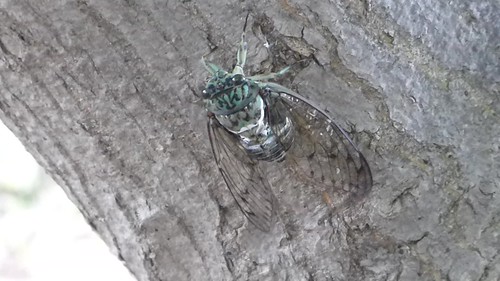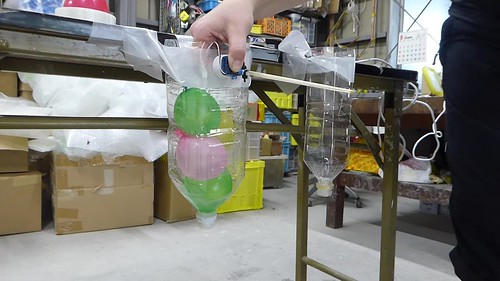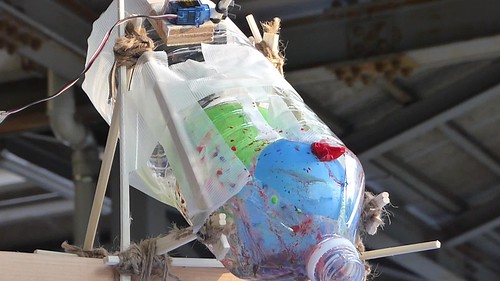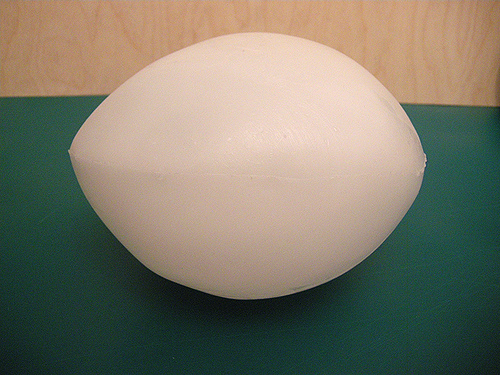Tokyo Interactions: a pre-collaboration
A key part of my research trip to Japan is to check out the feasibility of collaborating with artist Megumi Ishibashi. We’ve know each other for several years – having first met when I did an exchange visit with the university she was working at – and I really like her style of re-imagining urban landscapes when we’ve walked around Tokyo together. I’m not very familiar with her working processes and her aims for her sculptural work, however, so we arranged to spend some time together doing some experiments and generally figuring out how a working relationship might shape up.
Unfortunately our time working together was reduced by illness and a few work commitments that came up however, over the course of five days we were able to explore combining interactive and sculptural elements of both our practices.
We based ourselves at Tokyo Gakugei university, where Megumi has been working part time for a few years. After getting a bit tangled up in trying to get started we decided to go for a walk around campus to look for sites where we might locate artworks.
I liked the look of this islanded set of steps surrounded by long grass:
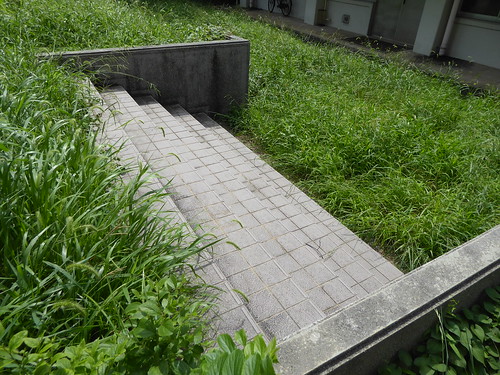
We also explored down little paths (this one involved ducking under lots of big spider’s webs and swatting at lots of hungry mosquitos) and had a wander around a little allotment where there seemed to be some experiemts going on with growing different varieties of rice.
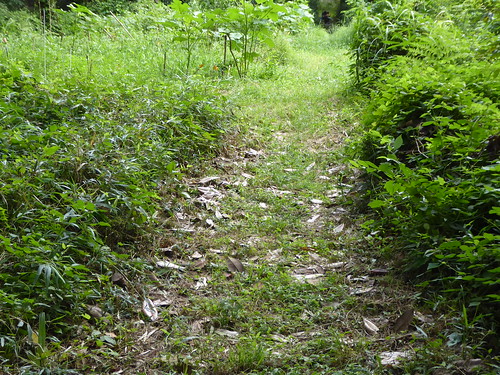

The campus has quite a lot of trees and green space, so we were constantly surrounded by the sound of the insects in the trees. I finally got to see a semi/cicada up close. Boy are these things loud!
The pivot point came when Megumi suggested we visited the exhibition room of a building next to campus; she had walked past it, but didn’t really understand what they did there and was curious to find out more.
We weren’t disappointed!
The place turned out to be the National Institute of Information and Communications Technology (NICT), a National Research and Development Agency, and the exhibition hall was full of things that made us go “wow!”.
The first thing we learned was that NICT is responsible for time in Japan: they do lots of work with caesium atomic clocks and calibrating the length of a second. They also determine Japan Standard Time and broadcast it across the country.
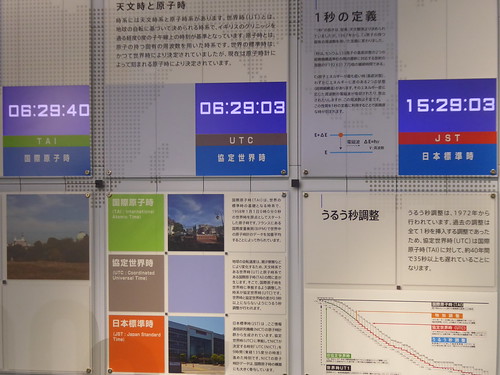
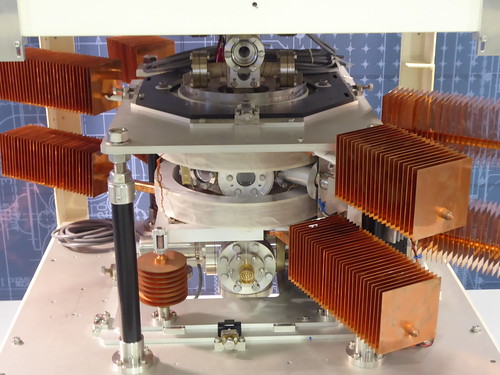
The two ladies on duty did a really good job of explaining everything to me in English and we essentially had a personal guided tour of most of the exhibition. This included microwave imagery from planes; a haptic stylus; a funky smell squirting thing that involved activated carbon, an app and me having to guess some aromas; and live visualisations of internet attacks.

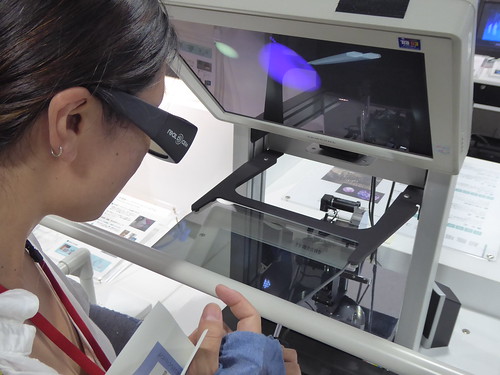
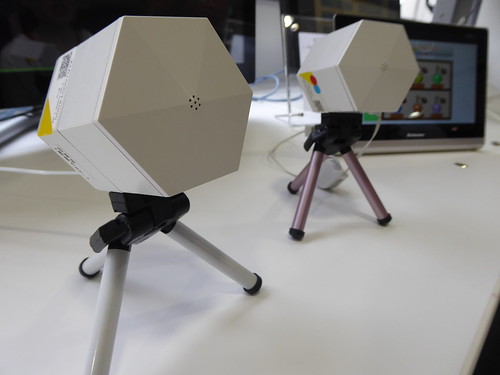
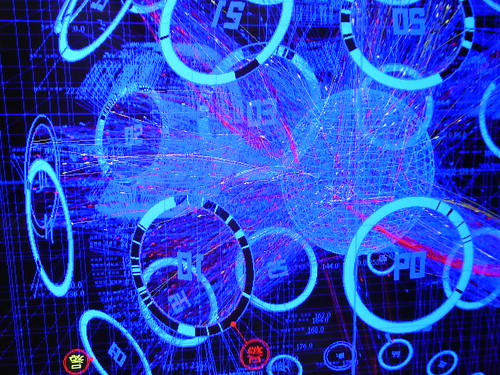
We left a few hours later, a little overwhelmed but very excited by what we had learned. The tower and the big clock made a lot more sense now, too!

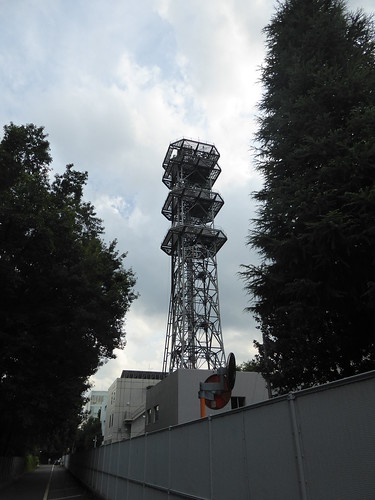
I felt there were some interesting resonances between the semi and the caesium clock – vibrations, being dormant for long periods then all of the action happening in a short space of time (read more about the semi here), those amazing cooling fins…
This kind of stuck and combined with Megumi’s preference for mechanised animation (rather than electronic) in the style of Pythagoras Switch.
Pythagora Switch from cereal griego on Vimeo.
So we sketched and dripped and carved and then spent hours days trying to refine a way of popping water balloons filled with paint over a model of a semi.

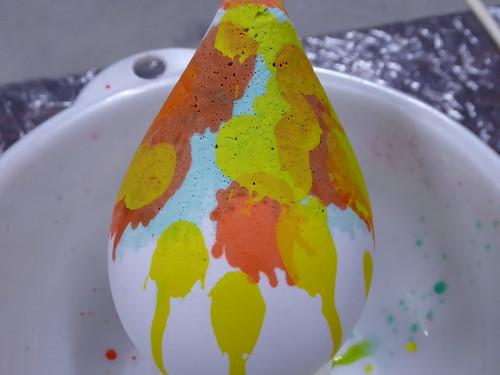

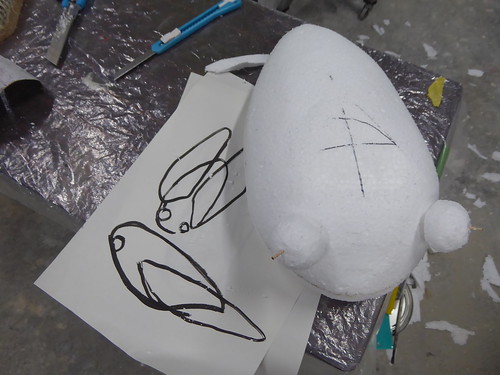
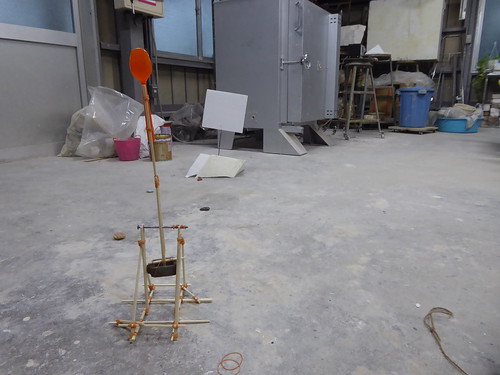
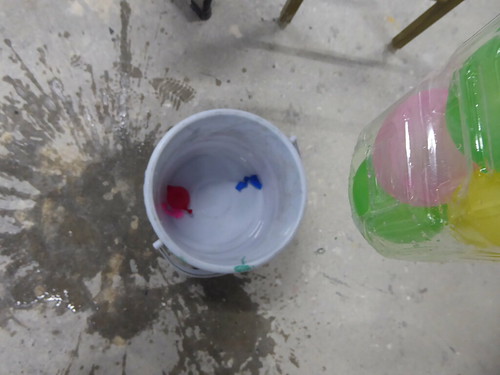
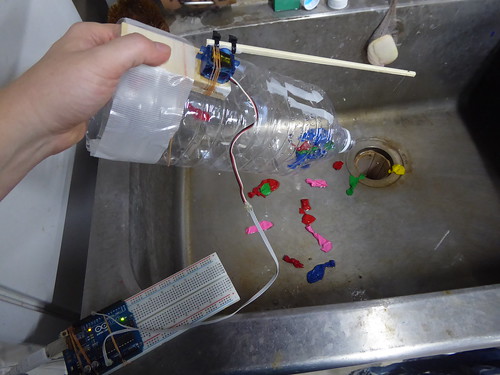
Alongside this, we were also trying to find ways of triggering sounds at intervals. We’d bought a radio controlled car, hoping that that would introduce a kind of clock function and visual interest as it circled around the semi. We got this working quite well as a trigger for audio via a Bare Conductive touch board, but alas it stopped working so well once we’d ‘waterproofed’ the sensor mat with some tape.
I also made a few noisemakers that used an arduino to count the number of times a microswitch got hit by the passing car. This gave us better control over the intervals between sounds, but we didn’t quite have the set up to be able to get it mounted securely.
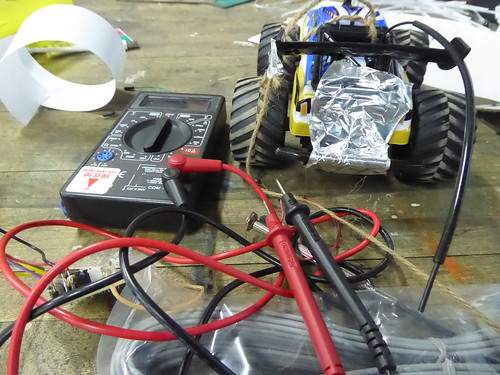

We also had concerns about the splashiness of the paint, so Megumi learned how to make DIY slime, which we then added colour to.
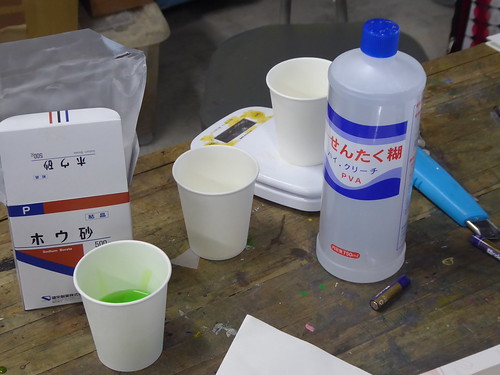
Getting the slime into the water balloons also took a certain amount of experimentation!
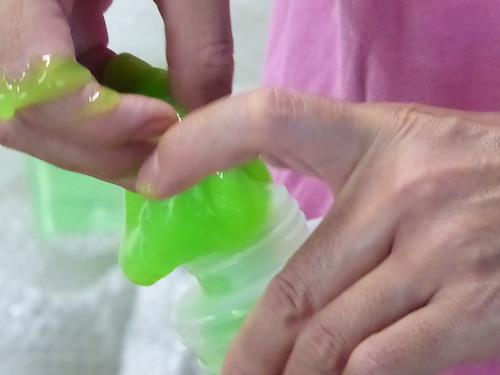
We’d done some really long days, so on our last day we set ourselves the deadline of 4pm and said we’d run with whatever we had working by then.
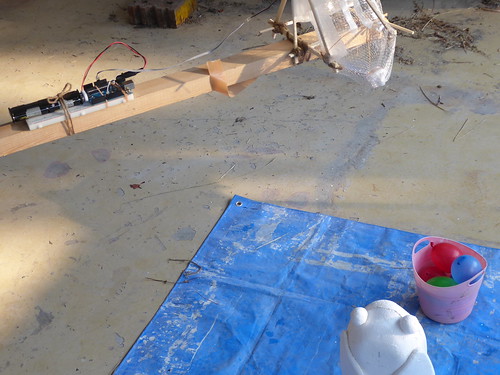
After a few test runs with water, we were ready to add some colour to semi-san.
It (mostly) worked!
We decided to go for broke and try the slime…
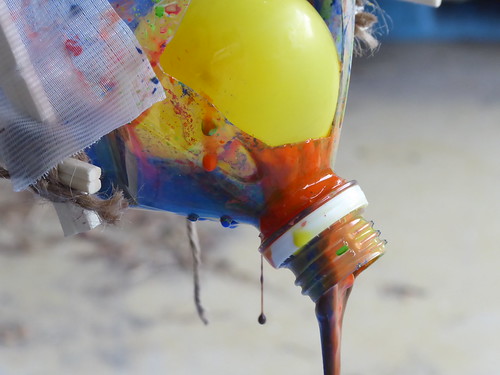
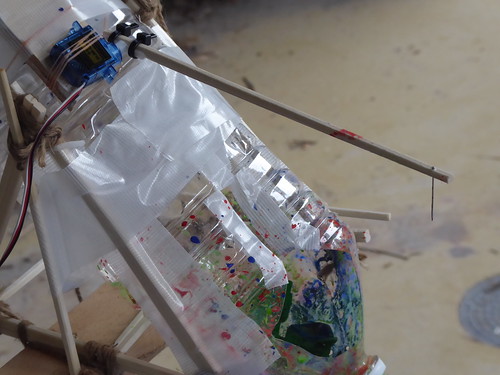
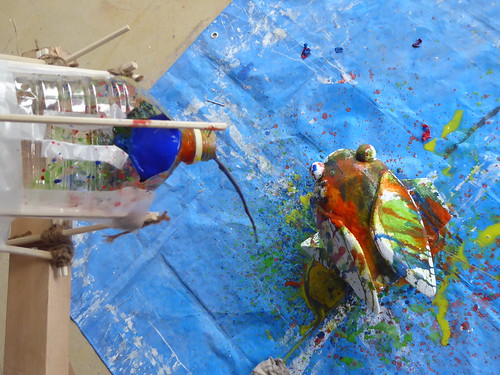
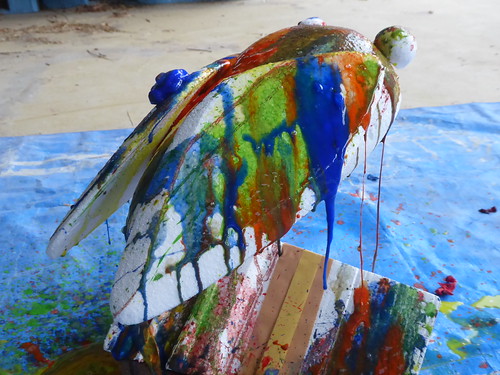

A lot of cleaning up to do afterwards, but quite a pleasing result!
Megumi usually works intuitively from her imagination, but I think we both struggled with the lack of a context for our experiments – the sorts of information that would shape size, construction and portability decisions. We didn’t have time or the resources to make a refined, finished piece of work, but at times it felt like that’s what we were trying to achieve. We made something interesting at the end of i but, as ever with me, it was the process that I was most interested in. Megumi and I are still friends (as far as I can tell!), so that’s a positive sign given the sorts of hours we were doing in the heat and mosquitos trying to get mechanical and electrical systems to work! I’ve learned more about the way she works and that will help shape any future proposals.
We’ll be meeting up again next week to think more about art that happens outside.
Photos and videos of splatty paint are gradually going up on Flickr as internet connectivity allows…
